Process or procedure ? Intimately linked, we often struggle to grasp their difference. However it is difficult to escape them, they are everywhere: in ISO certifications, internal control, optimization or automation of activities, clarification of responsibilities, transfer of know-how, etc. They need to be identified, sometimes optimized or harmonized, and above all described! Are you lost? Don’t panic, Optimiso Group will explain everything to you…
The difference between process and procedure in everyday life
After a quick search on “process definition” or “procedure definition” you will get a large number of results. According to the definitions of the International Organization for Standardization (ISO), which brings together 165 member countries, a process is “a set of correlated or interactive activities that transform inputs into outputs”. As for the procedure, it describes “the specified way of carrying out an activity or process. Still not obvious, is it?
To keep it simple, let’s take a familiar example: making a chocolate cake. The process is the action of making the cake and the procedure is the recipe that explains how to make the cake.

In the life of the company, there are many examples. Human resources management is a process in its own right that can be found in most companies. This process can be made up of several activities or sub-processes, such as recruiting a new employee, welcoming a new employee, managing training, managing absences, assessing employees, processing departures, etc. To ensure these activities take place in the best conditions, procedures will formalize the ways of doing things.
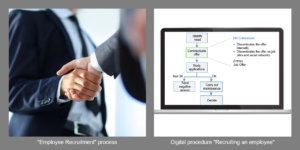
A process therefore corresponds to an activity carried out in the company, here the “Recruitment of an employee”, while the procedure explains how to carry out this activity. This is often where it is difficult to perceive the difference between process and procedure. So let’s see their definition in more detail.
What is a process and how to represent it?
As you will have understood, a process is not a paper or digital document, but the action of carrying out one or more activities. It is a lived reality that can be represented.
So, which process representation should you choose? Often, a process mapping is described for the whole company. It allows you to grasp at a glance the interactions between processes and to understand the department in charge of driving them. On map bellow, different types of processes can be distinguished.
The business processes also called operational processes or realization processes, indicate the core business of the company; they are those that bring added value to the end customer. For example, the production of pieces for an industry, the provision of care in a hospital, the management of roads in a municipality, the opening of a customer account in a bank, etc.
The support processes support the company’s core business (purchasing, invoicing, payment of salaries, management of the computer park, etc.).
And finally, the management processes are used to establish a strategy and steer the company (strategy definition, team management, crisis management, etc.).
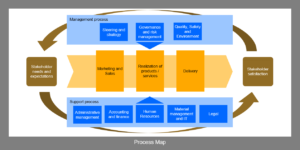
More simply, the processes and sub-processes of a company can be listed hierarchically, in the form of a tree.
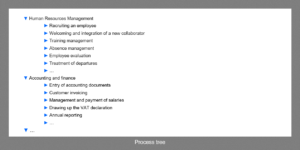
Finally, for a given process, it is possible to represent it with its input data, output data, actors, indicators, etc. in the form of a Crosby’s Turtle.
What is a procedure and how to represent it?
The working procedure describes how to carry out all or part of a process. It clarifies “who does what and how”. The procedure can take several forms: simple text, flowchart, computer graphics, images, sound or video recording. Besides, the vocabulary varies! The term “procedure” is sometimes replaced by “protocol” in the medical field or by “operating procedure“.
But beware, avoid the labyrinthine system! It is useful to describe procedures to ensure the proper performance of certain activities only. For example, those that cut across several departments, those for which incidents have occurred, those that have a direct impact on customers, those with high staff turnover, etc.
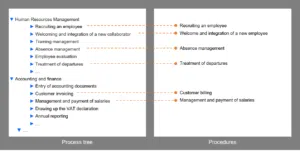
In any case, the procedure is a detailed explanation which should enable the person with the necessary skills to do the job as it is intended to be done. The procedure “Carrying out administrative procedures for a new employee”, for example, must be neither too much nor not sufficiently detailed to be understood by a human resources employee.
In short, the description of the procedures must be understandable for the target audience. “There are a few pitfalls to be avoided. It is important to keep in mind that we are primarily addressing employees, not computers. In addition, the description must remain faithful to the reality of the company” explains Siegrid, consultant with Optimiso Group.
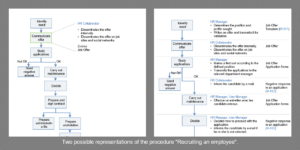
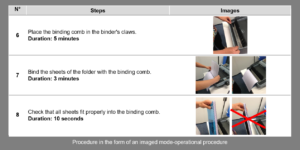
In the context of process automation, we rather use business process modeling notation or BPMN. This modeling method, standardized and codified with symbols, allows to describe a process or a procedure in order to automate it. This representation is therefore addressed to software rather than human beings.
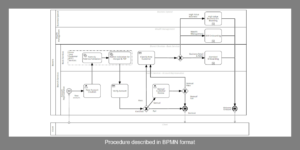
So, in order to understand the difference between process and procedure, it is necessary to understand what binds them together. You now have all the keys in hand to perceive the specificities and the links between these two terms.
